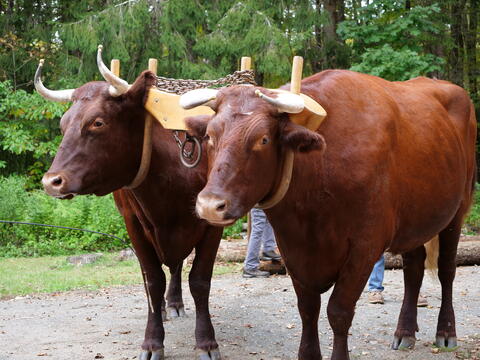
By: Nate McMullen ’25 MF
When Josie Valette ’25 MEM and I took over as co-managers of the Fire Student Interest Group (SIG) last spring, we agreed on a goal: squeeze every drop out of this unique leadership opportunity we possibly could. The potential for educational and professional programming was limitless, and we wanted to make the most of it. So, when a proposal to offer the S130/190 L180 basic wildland firefighter training, a course that covers foundational knowledge and skills for wildland firefighters, crept onto our radar, we leapt at it. The certification embodied everything we hoped to accomplish through the SIG. It would provide applicable land management skill development accompanied by a nationally recognized certification that helps pave broad educational and professional pathways for students.
Knowing I aimed to practice forestry in dry forest systems in the West after graduation, I was motivated to earn the certification myself to concretely strengthen my upcoming job applications. In gauging participant interest, we found that many students saw the same benefit. So, we connected with course provider Tall Timbers Research Station, raised funds with the generous support of Ucross High Plains Stewardship Initiative, Yale Forests, The Forest School at the Yale School of the Environment, and Yale School of the Environment (YSE) student groups, and opened the course for 33 master’s and doctoral students at YSE and adjacent programs.

Students practice digging a fireline at Yale-Myers Forest. Photo courtesy of Nate McMullen.
As the semester progressed, I watched as my peers enrolled in the training began to engage with YSE content differently. We approached a Western fire seminar through a more holistic lens, exploring the synergy between ecological and operational considerations in wildland fire. We connected over discussions about increasing climate-driven risk following an abnormally dry and wildfire-ridden fall across much of the Northeast. And we tangibly expanded our post-graduate career prospects, enthusiastically applying to positions in the fire space that previously felt inaccessible to many of us.
The training course joyfully culminated in a requisite field day at Yale-Myers Forest, expertly led by our own Josie Valette ’25 MEM, informed by her multiple seasons working wildland and prescribed fire. Here we cut a hair’s breadth into the life of a wildland firefighter. Our sweat-lined smiles while digging line and reverently held breath while huddled in protective fire shelters, generously provided by the Connecticut Department of Energy and Environmental Protection, reflected our enjoyment of the challenge and immense respect for the occupation. In these ways – and countless more – were our 33 respective experiences at YSE enriched by Tall Timbers’ basic wildland firefighter training course.


Students practice deploying protective fire shelters at Yale-Myers Forests. Photos courtesy of Nate McMullen.
My first post-graduate role includes wildland firefighting and fuels reduction as a forest management technician with a state forestry agency. Tall Timbers’ S130/190 L180 training course, made possible by the generosity of The Forest School’s Champion Fund, Ucross, the Ecosystem Management and Conservation Learning Community, the Forestry Learning Community, and Yale Forests, contributed to job opportunities like mine. It empowered us as near graduates to enter the fire realm and enhanced our academic journey along the way.
Josie, all enrolled students, and I would like to extend a deep thank-you to students, staff, faculty, and partner organizations that made this training possible. Its positive impact will resonate with our cohort throughout our careers.




